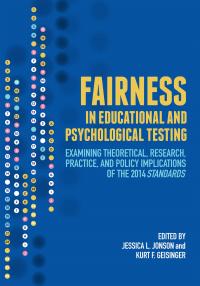The History of Bias Assessment in Educational and Psychological Testing
AERA members: Please enter your coupon code in the shopping cart coupon discount field.
The History of Bias Assessment in Educational and Psychological Testing
Kurt F. Geisinger
Click here to view and purchase Fairness in Educational and Psychological Testing
Title information
Abstract
This chapter provides a brief historical overview of how psychometricians, educational researchers, and psychologists have studied the fairness of tests. This history does not really begin until the early 1960s. Early foci included the apparent benefits of testing during the world wars, the use of intelligence testing, and the attempt to build culture-free and culture-fair tests. Shortly after the passage of the Civil Rights Act of 1964, college admissions and employment measures came under scrutiny for fairness by researchers and the courts, often with surprising results. Researchers developed test fairness models and methods for identifying items that behave with systematic differences across demographic groups. An original focus in test fairness was African Americans; subsequently, women, language minorities, immigrants, and those with disabilities were studied. The Standards for Educational and Psychological Testing (American Educational Research Association, American Psychological Association, & National Council on Measurement in Education, 2014) have shed much light on fairness in testing, especially in the most recent tests.
Keywords: bias detection; disability testing; history of testing; test fairness models

